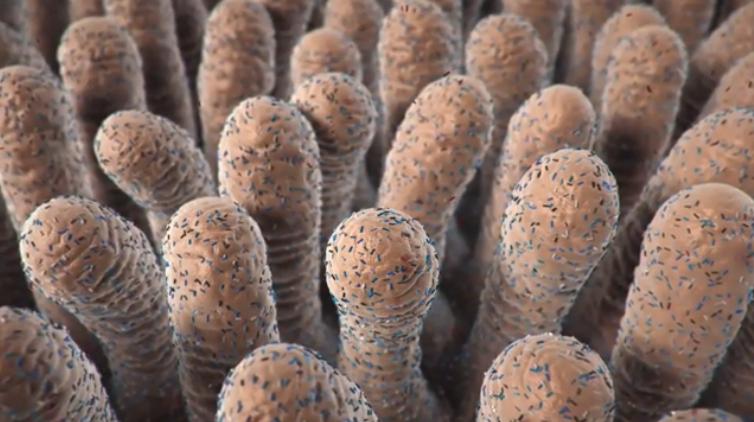Fungal infections have also increased over the past 20 years due to medical interventions with recent technologies and immunosuppressive diseases such as AIDS.
The number of fungal species worldwide has been estimated at 5 million, of which at least 300 have been recognized as a cause of diseases in humans. Only 20-25 of them are recurrent and frequent, but most are not transmissible from person to person and do not regularly attack healthy people (1).
Fungal infections can be minor, but some can be even deadly.
One of the most common and most common fungal infections is mycosis.
Components that aid in antifungal action include various active ingredients with specific properties. Among these, the most common are:
- Azoles. Compounds like fluconazole and itraconazole inhibit an enzyme crucial for the synthesis of the fungal cell membrane.
- Polyenes. Nystatin and amphotericin B are examples of polyenes that bind to sterols in the fungal cell membrane, causing leakage of vital cellular components.
- Allylamines. Compounds such as terbinafine interfere with the biosynthesis of fungal sterols, essential for cell membrane structure.
- Echinocandins. These drugs, like caspofungin, inhibit the synthesis of glucan, a critical component of the fungal cell wall.
- Griseofulvin. An older antifungal that disrupts fungal cell division.
These components are used in various formulations, such as creams, lotions, pills, and injections, to treat different fungal infections, from ringworm to more severe systemic infections.
Natural components that assist in antifungal action include a variety of substances extracted from plants, essential oils, and other natural products. Among these, the most well-known are:
- Tea tree oil. Known for its strong antifungal properties, it is often used in treating fungal infections like athlete's foot.
- Garlic. Contains allicin, a compound with effective antifungal properties.
- Aloe vera. Known for its soothing and healing properties, it also has antifungal effects.
- Coconut oil. Rich in medium-chain fatty acids, it has been shown to be effective against certain types of fungi.
- Turmeric. Its active ingredient, curcumin, has antifungal properties.
- Apple cider vinegar. Often used as a home remedy for fungal infections due to its acidic properties.
- Grapefruit seed extract. This natural extract is known for its potent antimicrobial properties, including antifungal activity.
These natural components are valued for their effectiveness and lower risk of side effects compared to synthetic antifungal drugs. They are used in various forms, such as oils, creams, supplements, and direct applications.
Other examples of antifungals:
Metals
- copper nanoparticles (against Oxysporum Fusarium)
Plants
- Mentha spicata
- Mentha pulegium
- Graveolens apium
- Aspergillus niger
Alkaloids
- spirooxindolo-pyrrolidine
- acridone
- Certain components can contribute to or exacerbate fungal diseases. These include:
- Moisture and warmth. Damp and warm environments promote fungal growth.
- Excessive sweating. Provides an ideal moist environment for fungal proliferation.
- Tight, non-breathable clothing. Traps moisture and heat, creating a favorable habitat for fungi.
- Improper use of antibiotics. Can disrupt normal microbial flora, allowing fungi to proliferate.
- Weakened immune system. Makes the body more susceptible to fungal infections.
- Diabetes. High blood sugar levels can promote fungal growth.
- Poor hygiene. Can increase the risk of fungal infections, especially in moist areas of the body.
The reports provided on Tiiips website are for informational purposes only and should not replace medical advice. Always consult a healthcare professional before making health-related decisions.
Antifungals studies
Piras A, Porcedda S, Falconieri D, Maxia A, Gonçalves M, Cavaleiro C, Salgueiro L. Antifungal activity of essential oil from Mentha spicata L. and Mentha pulegium L. growing wild in Sardinia island (Italy). Nat Prod Res. 2019 Jul 19:1-7. doi: 10.1080/14786419.2019.1610755.
Bolous M, Arumugam N, Almansour AI, Suresh Kumar R, Maruoka K, Antharam VC, Thangamani S. Broad-spectrum antifungal activity of spirooxindolo-pyrrolidine tethered indole/imidazole hybrid heterocycles against fungal pathogens. Bioorg Med Chem Lett. 2019 Jul 13. pii: S0960-894X(19)30467-6. doi: 10.1016/j.bmcl.2019.07.022.
Qi D, Zou L, Zhou D, Chen Y, Gao Z, Feng R, Zhang M, Li K, Xie J, Wang W. Taxonomy and Broad-Spectrum Antifungal Activity of Streptomyces sp. SCA3-4 Isolated From Rhizosphere Soil of Opuntia stricta. Front Microbiol. 2019 Jun 28;10:1390. doi: 10.3389/fmicb.2019.01390
Hermida-Montero LA, Pariona N, Mtz-Enriquez AI, Carrión G, Paraguay-Delgado F, Rosas-Saito G. Aqueous-phase synthesis of nanoparticles of copper/copper oxides and their antifungal effect against Fusarium oxysporum. J Hazard Mater. 2019 Jul 4;380:120850. doi: 10.1016/j.jhazmat.2019.120850
Gong Y, Liu W, Huang X, Hao L, Li Y, Sun S. Antifungal Activity and Potential Mechanism of N-Butylphthalide Alone and in Combination With Fluconazole Against Candida albicans. Front Microbiol. 2019 Jul 2;10:1461. doi: 10.3389/fmicb.2019.01461
Maciel AJ, Lacerda CP, Danielli LJ, Bordignon SAL, Fuentefria AM, Apel MA. Antichemotactic and Antifungal Action of the Essential Oils from Cryptocarya aschersoniana, Schinus terebinthifolia, and Cinnamomum amoenum. Maciel AJ, Lacerda CP, Danielli LJ, Bordignon SAL, Fuentefria AM, Apel MA. Chem Biodivers. 2019 Jul 12. doi: 10.1002/cbdv.201900204.
References_________________________________________________________________________
(1) Perfect JR. The antifungal pipeline: a reality check. Nat Rev Drug Discov. 2017 Sep;16(9):603-616. doi: 10.1038/nrd.2017.46. Epub 2017 May 12. PMID: 28496146; PMCID: PMC5760994.


